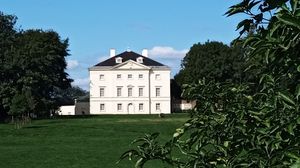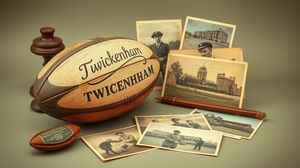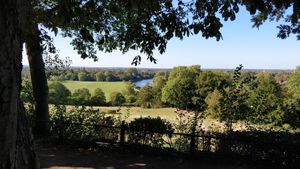
The Coronation Stone in Kingston upon Thames is a significant historical artifact that holds a special place in English history. It is believed to be the ancient site where Saxon kings were crowned during the early medieval period. This humble yet imposing stone sits prominently outside the Guildhall, quietly echoing the ceremonies of old.
One fascinating aspect of the Coronation Stone is its strong connection to early English monarchy. Records suggest that several Saxon kings, including Athelstan and Ethelred, may have been crowned upon this very stone, emphasizing Kingston's historical importance during their reigns.
The stone's journey is nearly as interesting as its historical significance. Originally located in Kingston's Market Place, it was moved to the grounds of the parish church and later settled in its current location outside the Guildhall in the 20th century.
The Coronation Stone, made from Sarsen, is similar in composition to the stones of Stonehenge, giving it an air of ancient mystery. This type of sandstone was commonly used for notable sites in Southern England and adds a layer of intrigue as to how and why it garnered such historical importance.
The folklore surrounding the stone adds to its allure. Some local tales speak of the stone possessing powers that unite and protect the monarchy, though these remain mostly in the realm of legend.

Making the Most of Your Visit:
Take a moment to visualize history: When you're standing in front of the Coronation Stone, try to imagine the grand coronation ceremonies that took place here centuries ago. It adds a layer of appreciation for the significance of what seems like just a simple stone.
Best photography time: Visit the stone in the morning or late afternoon when the light is softer for the best photos. The stone's textures and details are more pronounced during these times.
Explore the stone's material: Notice the Sarsen stone itself—a rare opportunity to see the same kind of stone used in Stonehenge without the crowds! Feel free to touch it and sense its cool, ancient surface.
Pair it with a Guildhall visit: After seeing the stone, if the Guildhall is open, take a look inside to explore its beautiful architecture and learn more about Kingston's history, enhancing your understanding of the area.
Check for local events: Keep an eye out for any community events or historical reenactments near the Guildhall, as these can provide a richer, more immersive experience of Kingston's history.

Visiting Times & Costs:
The Coronation Stone in Kingston upon Thames is open to the public year-round, as it is located outside in a public space next to the Guildhall.
Opening Hours: As the stone is outdoors, it is accessible at all times.
Admission Fee: Free of charge.
Accessibility:
- The Coronation Stone can be reached by a paved path, allowing easy access for those with mobility issues or using wheelchairs.
- However, the surface around the stone can be uneven, requiring careful navigation for some visitors.

Address & Map:

Nearby:























